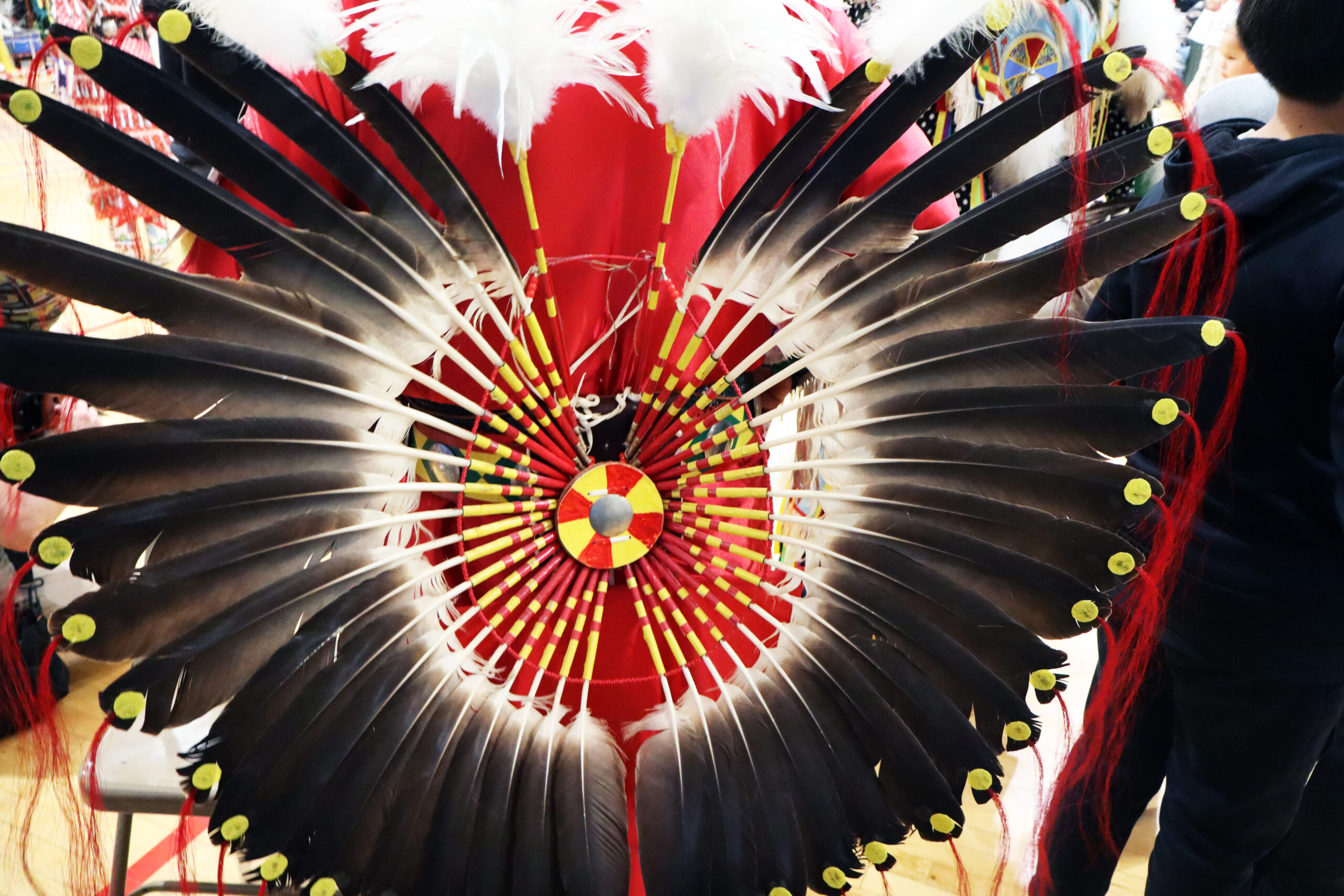Fifty years later, AIM still impacts Native communities

Traditional bustle male dancer at Liberation Wacipi 2025. Photo by Marnie Cook
RAPID CITY – Saturday’s gathering at the Boys Club in Rapid City was a celebration. Liberation Wacipi 2025 was hosted by Dakota AIM (American Indian Movement) Grass Roots and Wambli Ska. It was standing room only as dancers and families came from around the area to participate.
Wambli Ska Executive Director Chris White Eagle said this is the third year they have co-hosted the Liberation Wacipi, this year to commemorate the 52nd anniversary of the 1973 Wounded Knee Occupation.
Although he was not present at the event, there was a sense of collective relief with the recent return of Leonard Peltier to his homelands after his 50-year incarceration, accused of killing an FBI agent during the Occupation. President Joe Biden commuted Peltier’s life-sentence. Though he wasn’t pardoned Peltier will serve out the rest of his sentence in home confinement.
White Eagle said he and his brother Ernest started the Liberation Wacipi in Rapid City for the people who can’t attend the events held on the reservation. “This is a celebration to bring us all together.”
Dakota AIM Organizer Carla Cheyenne said that she and her husband Dakota AIM Director Thomas Cheyenne have been working with the organization since the 1990’s. She said it’s important to remember the work of the American Indian Movement since it began in 1968, inspired by the events of the 1960’s and a response to events happening locally in Minneapolis.
“There is a lot to AIM,” she said. “It was in 1968 that the Ojibwe women started fighting against police brutality in Minneapolis on East Franklin Street. Their sons were getting beaten by the police there.”
Martin Luther King, Jr had been assassinated in April of 1968 and by that summer there was deep unrest across the country because of entrenched racism, discrimination, as well as opposition to the Viet Nam war.
It was well known the constant violence that took place in Minneapolis. The police brutality was common and Native American incarceration rates were high. It had started out as a local response. AIM co-founders Clyde Bellecourt, Dennis Banks and George Mitchell began addressing the issues of poverty, discrimination and police brutality in the Minneapolis area.
The group organized patrols to monitor police harassment and brutality. Members used cameras and asked for police badges and monitored police scanners to ensure that no one’s rights were being violated.
AIM quickly grew, gaining national attention as it expanded its focus to tribal issues, treaty rights, high rates of unemployment, lack of American Indian subjects in education and the preservation of Indigenous culture.
The group led a march on Washington D.C called the Trail of Broken Treaties. Eventually, they came to Wounded Knee on the Pine Ridge Reservation in 1973 to protest U.S. and tribal government.
“They stayed there for 71 days,” said Cheyenne. The movement was branded a militant organization after that. It was known for employing disruptive tactics to draw attention to Native American grievances and a key example of that is the Occupation of Wounded Knee at the historic site of the Wounded Knee massacre. “We are just making them abide by their own laws.”
The occupation is considered one of the American Indian Movement’s greatest successes because of the national attention the occupation brought to the treaty violations and social injustices as well as continued attention to Indigenous issues. AIM’s activism contributed to the passage of important legislation like the Indian Self-Determination and Education Assistance Act and the American Indian Religious Freedom Act. The organization has spurred several generations of political engagement and leadership among Native Americans and inspired many grass roots movements.
Cheyenne said AIM’s influence has been important and pushed back on the militant narrative, “Our first and second generation, ‘AIM babies’ we call them, they are teachers. They’re lawyers. We were raised right. We were raised to know our rights, stand up for our people and do what we can. They taught a lot of non-violent direct action.”
Dancers came to Saturday’s event to compete for prize money in the Women’s Traditional Special, Jingle Dress Special, Grass Dance Special, Musical Chairs with a Switch Dance and Dance Off, and the Crowning of Miss Dakota AIM Grassroots and Lill Miss, as well a buffalo feed.
(Contact Marnie Cook cookm8715@gmail.com)
The post Fifty years later, AIM still impacts Native communities first appeared on Native Sun News Today.
Tags: Top News
